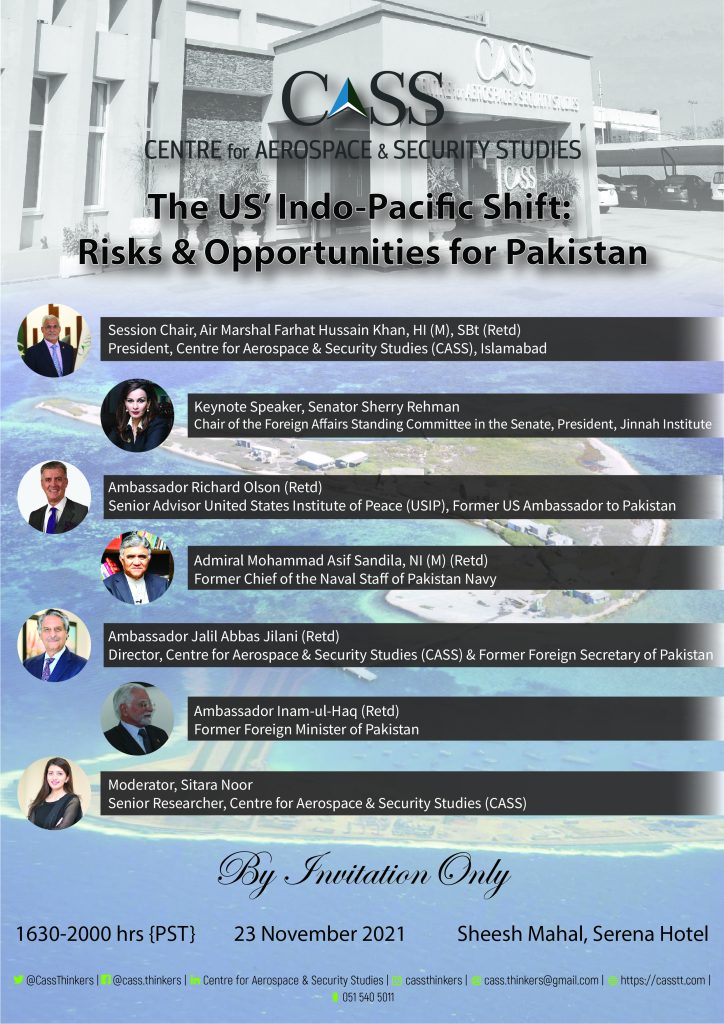Concept Note
Since the announcement of the US “Pivot to Asia” policy, the strategic landscape of the region has undergone profound changes where the US-China competition has taken a centre stage. The bilateral relations of the US and China have evolved from being competitive to confrontational in the past few years. The rise of China in the economic and military domain is being perceived as a direct challenge to American supremacy. The recent developments in the strategic and political sphere along with recurring diplomatic altercations between the US and China over Taiwan and South China sea are indicative of a challenging path ahead. The growing antagonism is having a huge impact on regional security dynamics, forcing regional countries to assume more defined positions.
President Biden came to power with the promise of stabilizing the world and talked about ‘recalibrating priorities’ after two decades of wars. Nonetheless, with the announcement of ‘AUKUS’ – a trilateral security pact between Australia, the UK and the US, under which the UK and the US will help Canberra acquire nuclear-powered submarines, the situation on the ground is pointing at a rapidly intensifying strategic competition between Washington and Beijing and their respective allies. The competition is specifically on the rise in the Indo-Pacific region with the possibility of Quad taking a central role in standing up to the perceived Chinese expansion in the region.
Pakistan, as an important regional player, is directly affected by the developments in the region. After the US withdrawal from Afghanistan, Pak-US relations are once again at their lowest. While Pakistan should certainly continue to balance its relationship with both the US and China, it should prepare for a future situation where it may have to take a defined position. Despite the shrinking space for diplomacy, Islamabad must stay on the course and avoid being caught in the crossfire of this great power rivalry.





